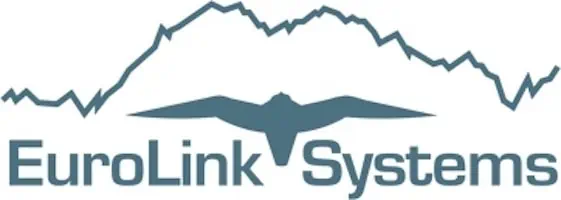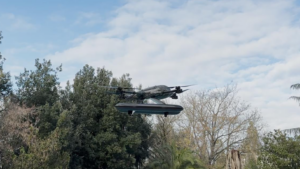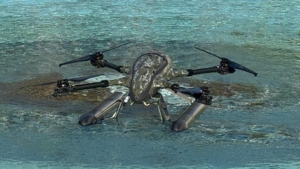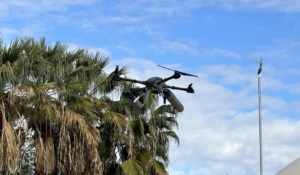In a whitepaper, Andrea Lapiana, Engineering Lead for Eurolink Systems, highlights drone utilization for tough maritime target applications.
Abstract
The maritime drone market has come into its own with a strong outlook and forecast – predicting a 25% CAGR from 2023-2028 – with the US market commanding 36% market share, during the plan period.
The competition in the maritime drone market has become intense, with several key players gaining traction and carving-out their area of specialization. Key factors driving this include cross-industry, emphasis on maritime surveillance, maritime research and biodiversity, oceanography, cargo and oil rig inspection, drug interdiction, deterring piracy and smuggling activities and drones increasing role, within the defense sector for surveillance, security, mapping, monitoring enemy movement, search and rescue, etc. – and in some cases, with strike capabilities operating in contested environments.
This market segment is experiencing a proliferation of new technologies, packaging techniques and other advancements, as drones within the maritime domain require maintaining hovering stability, ability to withstand extreme wind resistance, adapting to rapidly changing environmental/climatic change and other challenges that make them distinct from land applications. This has also driven the need to design and develop new generations of camera technology, sensor-based systems, on-board AI capabilities, advanced communication systems, propulsion systems and other aerodynamic advances that correspond to the target environment.
The Maritime drone market is not without challenge – like its counterparts in other drone target segments – regulatory and legal challenges prevail – slowing down the integration of maritime drones into the fabric and mainstream. This also presents challenges in areas, like data privacy, cybersecurity, AI/ML and other areas that are stumping the industry.
Maritime drones have been put into a range of real-world applications, which have fueled industry studies highlighting the cost-savings, operational efficiencies and safety/security benefits derived.
Evidence of market acceptance/adoption are confirmed by major contracts let to:
- Martek Marine – awarded by the European Maritime Safety Agency (EMSA) valued at $72 million for the 5-year term, which follows a previous $10.7 million contract award focused on Coast Guard monitoring and surveillance activity, border control, search and rescue, pollution monitoring, detection of illegal fishing and drug trafficking.
- Saildrone and Spatial Integrated Systems – awarded by the Coast Guard Research and Development Center (RDC) valued at $1.8 million – project is designed to assess low-cost, commercially available, autonomous Unmanned Surface Vehicles (USV) solutions to improve maritime domain awareness in remote regions of the Pacific Ocean with emphasis on detecting suspected, illegal, unreported and unregulated fishing activity and alerting command centers of potential violations.
- HII – awarded by the US Navy valued at $347 million – consisting of an acquisition of up to 200 Unmanned Undersea Vehicles (UUV) to support the Navy’s Lionfish program with emphasis on intelligence gathering, mine detection and countermeasures.
- General Atomics – awarded by India’s Defence Ministry at $3 billion – consisting of US- made, armed MQ-9B Sea Guardian drones focusing on maritime patrol and reconnaissance.
Anatomy of a Drone Maritime Surveillance Application
Drones play a critical role in border surveillance and monitoring illegal activities (cross-industry), although this is particularly challenging within the maritime environment.
Flying a drone over the sea and maintaining balance and integrity, when confronted with divergent winds, sea salt and other environmental conditions, hard to predict weather patterns that can change momentarily and other aspects – demands special-purpose drones that can meet and withstand these elements.
This is further amplified by the nature and complexity of the mission.
For example, monitoring drug interdiction on the high seas requires a drone aerodynamic design that is sleek and fast, built around packaging technologies that can handle the rigors of the target environment – that delivers drone hovering stability, in spite of extreme wind resistance and other environmental/climatic factors. To support this application – advanced flight control systems, sophisticated, day-and-night sensor and camera technologies and stealth-like capabilities that minimize detection are necessary. There are few, affordable drones on the market that have this mix of capabilities, while continuing to operate effectively, if they are water-damaged. Continuous operation is key for this class of drone and its target application.
Maritime drones play a critical, front-end role in drug interdiction to scope-out the activities of the bad guys, without putting patrol agents in dangerous situations. Drug traffickers are using evolving technology including semi-submersibles, narco torpedoes and full submarines to support their illegal activities. This puts a greater burden on the Coast Guard and other organizations to keep pace to outmaneuver and outwit the bad guys. Drones complement traditional approaches utilizing helicopters and other craft to monitor and derail illegal activities.
Technical Overview
This iteration is consistent with the Beluga product roadmap, which stresses that within the family of mini-drones – the Beluga will return to its natural marine environment.
The potential to operate in Marine CONOPS introduces a wide variety of use cases. The platform can be equipped with an IP67 operational engine that has already been tested and certified, which can be configured to handle various IP66/IP67 EO/IR capabilities that fit a range of Intelligence, Surveillance and Reconnaissance target applications. Beluga supports various payload options and hosts on-board AI with powerful algorithms providing critical pre-processing and data analysis. The unique Beluga water take-off/landing capability provides flexibility to adequately handle dedicated maritime applications or provide mixed land and sea support – in one platform. This platform hosts a “Silent Drone” capability, which is derived from a breakthrough aerodynamic design of its rotors/propellers.
This feature is critical to a Drug Interdiction application, which allows the Beluga to be stealthy and undetected.
Beluga is primed for quick deployment, which can be achieved in less than four minutes.
Its high-degree of configurability allows the platform to adjust and adapt to a wide-range of target applications/use cases. The auto mode provides GNSS precision and accuracy, which allows the pilot to set switches to support different satellite constellation alternatives. A unique floating bar is designed to provide radio transparency with a low electromagnetic signature – essential to sensitive applications. Together with the radar, IR, acoustic RF signatures, the BelugaTM operates “smart on the field,” which supports various EW scenarios. Combined with the programmable embedded processing board (s) – onboard autonomous, A.I. operations are realized without involvement of the GCS/Radio link, making BelugaTM one of the most versatile platforms available.
Beluga: The “natural” evolution of drone technology.
Conclusion and Perspectives
Consistent with the standard approach, EuroLink is ready to customize the system for the target application, which will result in jointly defined, Requirements Definition/SOW.
Drone utilization for maritime applications is faced with multiple challenges arising from environmental/climatic factors and other considerations. The Maritime domain is not suited for benign drones or low-end, hobbyist platforms. Wind, salt, sand, cresting waves, other conditions and coordination with platforms like ships, boats and other craft, within an unstable environment, makes this uniquely challenging. The demands of Maritime applications limit the range of qualified drones that can effectively operate, deliver and survive. The Beluga family of mini-drones from its inception has been designed to function in this class of environment – with an eye on diverse use cases.
Furthermore, EuroLink is eager to collaborate on overall mission goals, project plan, flight path to target destinations, etc. – to configure the right Beluga solution to fit the target need. That includes a demonstration program with actual payload items – common to the application. EuroLink can translate these efforts into proposals for consideration.












